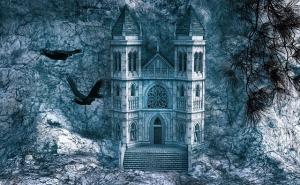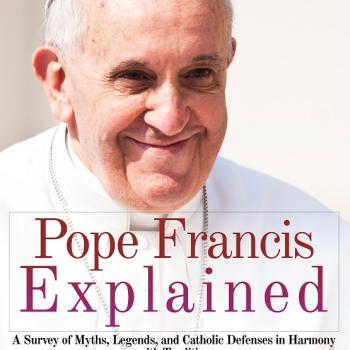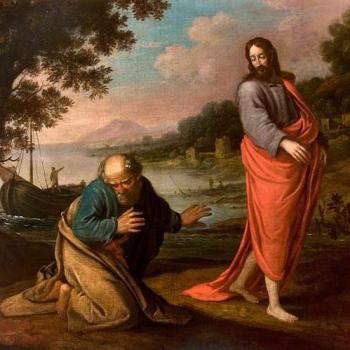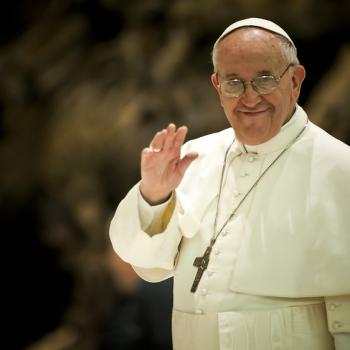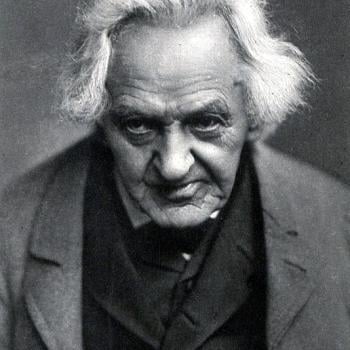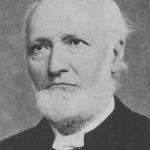Chapter 3 (pp. 31-35) of my book, Reflections on Radical Catholic Reactionaries (December 2002; revised second edition: 17 August 2013; slightly revised again in December 2023 for the purpose of the free online version). Anyone who reads this book should first read the following three introductory articles, in order to fully understand the definitions and sociological categories I am employing:
Introduction (on the book page)
Definitions: Radical Catholic Reactionaries, Mainstream “Traditionalists,” and Supposed “Neo-Catholics” [revised 8-6-13]
Radical Catholic Reactionaries: What They Are Not [9-28-21]
If you’re still confused and unclear as to my meanings and intent after that, read one or more of these articles:
Rationales for My Self-Coined Term, “Radical Catholic Reactionaries” [8-6-13]
My Coined Term, “Radical Catholic Reactionary”: Clarifications [10-5-17]
Clarifying My Coined Term, “Radical Catholic Reactionary” [4-3-20]
This book is modeled after the method and structure of the French mathematician and Catholic apologist Blaise Pascal’s classic, Pensées (“thoughts”). Catholic apologist and philosopher Peter Kreeft described this masterpiece as “raw pearls” and “more like ‘sayings’ than a book . . . ‘Sayings’ reflect and approximate the higher, the mode of Christ and Socrates and Buddha. That’s why Socrates is the greatest philosopher, according to St. Thomas (S.T. III, 42, 4).”
*****
- Many radical Catholic reactionaries believe that the “bitter fruits” of Vatican II have all but “destroyed” the Church. This is “quasi-defectibility.” The reactionary rarely – in mixed company — wants to assert this outright (according to their incessant doublethink), but how close they habitually come! It becomes an Orwellian situation wherein the Church can’t defect, yet it can come so close that the observer is tempted to opine that it is a distinction without a difference. Meanwhile, “traditionalist” some reactionary pessimists continue their exodus from the “middle position” (relatively speaking) to the more logically consistent but less orthodox formally schismatic positions of sedevacantism and other similar groups. Faithful Catholics believe that God will not let the Church in any way, shape, or form be “destroyed.”
- G. K. Chesterton observed: “At least five times, . . . with the Arian and the Albigensian, with the Humanist sceptic, after Voltaire and after Darwin, the Faith has to all appearance gone to the dogs. In each of these five cases it was the dog that died.”(The Everlasting Man, Garden City, New York: Doubleday Image, 1925, 254)
- History offers ample illustration that the heretics always eventually disappear, or at least greatly diminish in influence. The Church will survive. In fact, the beginning signs of coming revival are plain already, if one would simply maintain a little hope and optimistic faith that God is in control.
- The present crisis is the most serious the Church has ever faced, per Pope St. Pius X’s summation of the evils of modernism. At the same time (in contrast to reactionaries), orthodox Catholics remain total optimists as to eventual outcome — through faith, reading the signs of the times and of positive developments, and the knowledge of previous crises in Church history. We vehemently deny that the Church has defected or has been taken over by the forces of evil, and all the other pessimistic, scandalous, and pathetic scenarios that reactionaries suggest concerning causes of the crisis and institutional demise, “auto-demolition,” etc.
- Reactionaries think that the Church will eventually wake up and abandon the great “liberal experiment” of Vatican II. But this is the atrocious and exceedingly un-Catholic belief that a validly convoked ecumenical council, ratified by a pope, could be so heretical as to necessitate “abandonment,” as if we were talking about the Robber Council of 449. This is defectibility and nonsense — a pure hybrid of a certain strain of a-historical Protestantism and “Catholic” liberalism.
- The Church, we are told, has institutionally defected (or almost so). Never before (so reactionaries claim) has rampant (institutionalized, proclaimed) error run roughshod over orthodoxy for so many years after a council. Obviously, then, according to reactionaries, the Church is in dire straits. As in the view of Martin Luther, the Church has descended into darkness, and brave prophets have now been raised to bring it back to life. Luther seemed to think of himself as some sort of prophet-figure, too. As reactionaries seem to follow his example in many other ways, why not this one, also?
- Reactionaries contend with a straight face that the Church has collapsed, apparently mainly because of the New Mass, ecumenism, and religious liberty. If they want to see a real collapse, they should go look at the various liberalized Protestant denominations, such as the Episcopalians or the United Church of Christ. Even the Orthodox (who pride themselves on their strict traditionalism and immunity from modernism) accept contraception and divorce. One can’t fail to note the striking contrast. All these groups have institutionalized theological errors and immorality, and now – in some instances — call evil good, and heresy, orthodoxy. I don’t think reactionaries have the slightest inkling of what real “near-spiritual death” looks like.
- Obviously, modernism has filtered down to reactionaries also, since they are so pessimistic about the Church, just like the most liberal, skeptical German higher critics of the 19th century. They doubt the council; they doubt the pope. The Church is practically in shambles; almost in the grips of Antichrist himself . . . What better success could the modernists achieve than to get a committed, devout Catholic to doubt those things, even while he bashes the modernists who have assisted in the promulgation of such loss of belief (though not through the council itself)?! The entire reactionary argument about the virtual downfall of the Church is based on a subjective house of cards. Once logic and consistency are introduced to it, it collapses. It has more holes in it than a pin cushion. The opposing view is based on objective facts of Church history, and the analogy of earlier councils and crises (following Newman’s methodology in his Essay on the Development of Christian Doctrine). Pre-conciliar authorities and popes express views diametrically opposed to those espoused by reactionaries.
- “Auto-demolition” is a favorite reactionary expression for the alleged institutional demise of the Church. Yet is this term applied to any other troubled period of Church history? It is not. Since the Church always revived itself from very deep pits of decadence and heretical outbreaks in the past, according to the principle of indefectibility and the guidance of the Holy Spirit, it obviously would make no sense to do so. But as many reactionaries apparently aren’t sure of the outcome of this crisis, seemingly lacking faith in God’s designs in the worst of circumstances (we call that providence and sovereignty in theology), they utilize a phrase that would be patently ludicrous in other historical circumstances. Malcolm Muggeridge wrote about “The Great Liberal Death Wish.” I guess many reactionaries believe that Christ’s own Church — His Body — is rapidly committing suicide as well. How sad . . .
- If the council and popes are positively promulgating “grave” heretical error, then surely the Satanic conspiracy to overthrow the Church is complete, and the “gates of hell” have prevailed against the Church, contrary to our Lord’s promises (Matthew 16:18). This would, of course, raise further thorny difficulties for orthodox Christology.
- We need not start believing that the Church has self-destructed now because of the modernist crisis, since it isn’t much worse than the Arian crisis, or the “Reformation” crisis, or the Great Schism, or the rupture of 1054, or recurring periods of moral decadence.
- G. K. Chesterton:
I suspect that we should find several occasions when Christendom was thus to all appearance hollowed out from within by doubt and indifference, so that only the old Christian shell stood as the pagan shell had stood so long. But the difference is that in every such case, the sons were fanatical for the faith where the fathers had been slack about it. This is obvious in the case of the transition from the Renaissance to the Counter-Reformation. It is obvious in the case of a transition from the eighteenth century to the many Catholic revivals of our own time . . . Just as some might have thought the Church simply a part of the Roman Empire, so others later might have thought the Church only a part of the Dark Ages. The Dark Ages ended as the Empire had ended; and the Church should have departed with them, if she had been also one of the shades of night. (The Everlasting Man, Garden City, New York: Doubleday Image, 1925, 250-252)
- The liberal frowns upon the institutional Church. The Protestant denies that the One True Church “subsists” in the Catholic Church, or re-defines it as invisible. The quasi-schismatic reactionary believes that the Catholic Church could somehow collapse institutionally (just as many historically sophisticated Protestants think was the case with the late medieval Catholic Church).
- Do reactionaries think that God will condemn anyone for having too much faith in His Church and His protection of it from error and defection into heresy?
************************************
Related Reading
“Could the Catholic Church Go Off the Rails?” (Indefectibility) [1997]
Indefectibility: Does God Protect His Church from Doctrinal Error? [11-1-05; abridged and reformulated a bit on 2-14-17]
“The Gates of Hell Shall Not Prevail” Against the Church [11-11-08]
Indefectibility of the One True Church (vs. Calvin #9) [5-16-09]
Indefectibility & Apostolic Succession (vs. Calvin #10) [5-18-09]
Dialogue with a Lutheran on Ecclesiology & Old Testament Indefectibility Analogies [11-22-11]
The Bible on the Indefectibility of the Church [2013]
Salesian Apologetics #1: Indefectibility of the Church [2-4-20]
Pastor Aeternus (1870): Can a Pope Ever Make Heresy Binding? (Dr. Robert Fastiggi and Ron Conte; edited by Dave Armstrong, in Response to Timothy Flanders) [12-1-20]
Papal Indefectibility: Dr. Fastiggi vs. Fr. Z [3-11-21]
*
*****
*
Photo credit: kalhh (10-28-17) [Pixabay / Pixabay License]
*
*


